Congratulations to this year’s award winners
The International Society for Landscape, Place, & Material Culture is pleased to announce the recipients of its 2022 Awards:
Henry H. Douglas Distinguished Service Award
From the award presentation:
This year’s Douglas Award committee considered several excellent candidates before choosing one whom we felt best represented the criteria and spirit of the award. This year’s recipient has long demonstrated an interest in the subject and ideals of the Society through academic work and service. They approach the subject of material culture with an infectious enthusiasm but also the commitment and attention to detail necessary to excel in an academic environment. A published author, a noted teacher, a Fulbright scholar, a member of the Society since 1993 who has presented numerous papers at our annual meetings, Tim Anderson.
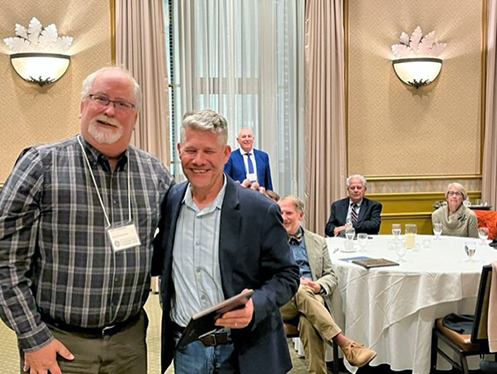
Tim has brought innovation and dedication to his role as the Treasurer of the Society, moving us into the 21st Century incorporating PayPal to make paying for membership and registering for conferences much easier for members. Tim also planned and led a great field trip to Ohio Amish Country during the 2015 Meeting in North Canton, Ohio.
As an Associate Professor of Geography at Ohio University, Tim’s academic interests have focused on settlement and material culture, primarily in and around Ohio but certainly not limited to the Buckeye state. His particular interest in German settlement has taken him to exotic and distant lands such as Romania and Missouri.
In addition to numerous journal articles, Tim has published a textbook and is co-editor of a forthcoming book called Settling Ohio: First Peoples and Beyond.
Tim serves on the Historic Site Preservation Office and the board of the Ohio History Connection on issues related to historic preservation—including recommendations for properties nominated to the National Register of Historic Places.
Tim Anderson exemplifies the criteria of the Henry H. Douglas Award, and we are pleased to honor him with the award, a nice plaque, and membership on the committee.
W. Frank Ainsley Outstanding Service Award
From the award presentation:
The Outstanding Service Award, established in 2012, is named in memory of long-time member and geographer Dr. W. Franklin Ainsley, who faithfully served as the Society’s secretary/treasurer for 20 years. This special award is presented only periodically to an ISLPMC member in recognition of outstanding service and dedication to the Society. The criteria for this award include long-time membership in ISLPMC, as well as outstanding service and dedication to the Society through committee work, board membership, and/or planning annual meetings.
This year’s award is presented to Cory Jensen.
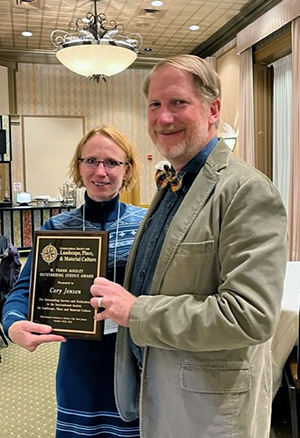
Cory Jensen is a Preservation Program Specialist and Architectural Historian at the Utah State Historic Preservation Office. Along with coordinating the National Register of Historic Places program for the state, he manages the architectural survey program and historic sites database. He also performs Section 106 Review compliance for Utah Department of Transportation-related projects.
Cory received his BS from BYU and an MS degree in Historic Preservation at the University of Utah, where he is an adjunct assistant professor in the School of Architecture, teaching courses in historic building documentation, and vernacular architecture of Utah, which mirrors his research interests.
Cory has been a member of ISLPMC for several decades and has served the Society in many important ways. In 2017, he organized the Society’s annual meeting in Salt Lake City, complete with informative architectural tours of the city’s neighborhoods and buildings important to the Mormon community, sites of regional historical importance, and paper sessions in the restored historic train station in the city’s center. For many years, he has chaired what is arguably the most time-consuming committee in ISLPMC, the committee that selects the annual book awards. He has served on the Board of ISLPMC, and continues to dedicate his time and career to preserving the cultural and historic landscapes of the Western United States.
Congratulations to Cory Jensen, this year’s recipient of the Frank Ainsley Outstanding Service Award.
The Wilhelm-Keiffer Student Research Award
In honor of the contributions of both Dr. Hubert Wilhelm and his protégé, Dr. Artimus Keiffer, the Wilhelm-Keiffer Student Research Award provides current and recently graduated undergraduate students with the opportunity to compete for a research award in the field of material culture studies by completing and presenting a poster at the annual ISLPMC Meeting.
The 2022 Wilhem-Keiffer Award was presented to Morgan Hurt, University of Missouri, for “Since Waldmire: A Comparative Photo Analysis of Two Midwestern College Towns.”
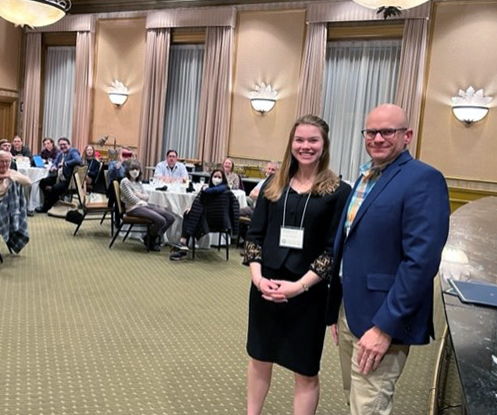
From Hurt’s abstract: “In the late 1970s, famous Route 66 artist Bob Waldmire illustrated posters for various American college towns, among them Columbia, Missouri and Champaign, Illinois. Since then, their appearances have dramatically changed. Waldmire’s posters captured the senses of place and cultural landscapes of these two locations, providing an interesting opportunity to explore examples of change and continuity.”
Another poster and presentation was recognized by the committee with a Poster Presentation of Distinction Award. “Maranville’s Cherokee Balsam! The Patent Medicine of Robert E. Maranville” by Joseph Kinney, Castleton University, Vermont (photo below).
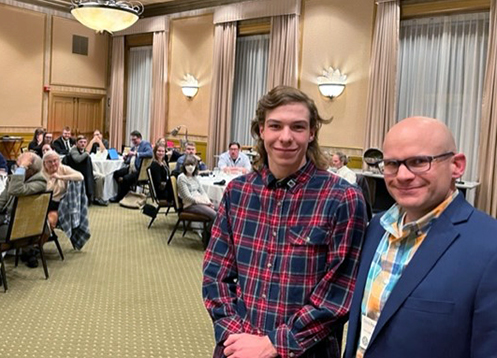
From Kinney’s abstract: “After the close of the American Civil War in 1865, rates of disease skyrocketed among returning soldiers and formerly enslaved people. As there was a lack of federal guardrails regarding the production and distribution of medicine at the time, a market vacuum was created in the pharmaceutical industry in which aspiring entrepreneurs created patent medicines to cash in on this growing medicinal demand. Robert E. Maranville, the creator and marketer of “Cherokee Balsam,” was one such entrepreneur…”
Fred B. Kniffen Book Award
This year’s winner of the Fred B. Kniffen Book Award is Sarah Fayen Scarlett for her book, Company Suburbs: Architecture, Power, and the Transformation of Michigan's Mining Frontier, published by University of Tennessee Press, 2021.
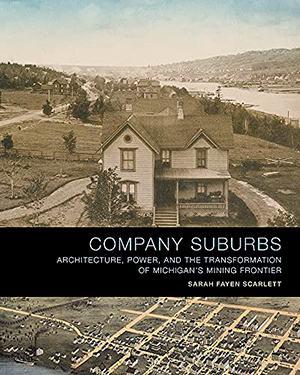
Sarah Fayen Scarlett is an Associate Professor of History at Michigan Technological University. As she notes in her bio: “I am a social historian who privileges architecture, landscapes, objects, and artworks in my research, public interpretation, and teaching strategies. My work relies on the idea that the built environment and the objects within it reflect and also shape human beliefs and attitudes. I locate myself at the intersection of three interdisciplinary subfields: vernacular architecture, material culture, and cultural landscape studies. I interface with scholars and methodologies from fields including history, archaeology, geography, American studies, architecture, and art history.”
ISLPMC Historic Preservation Award
From the award presentation:
For this year’s ISLPMC Historic Preservation Award, tonight we recognize the Historical Society of Ocean Grove, New Jersey.
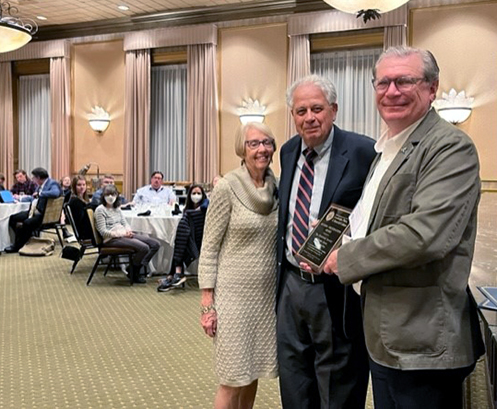
Located on the North Jersey Shore in Monmouth County, Ocean Grove is one of the few remaining religious camp meeting sites associated with the Holiness Movement, which began during the 1840s. If you are going to be on tomorrow’s bus tour, you’ll get to see the Ocean Grove Camp Meeting buildings and landscape.
Of course, camp meetings and religious revivals had begun during the Second Great Awakening of the early nineteenth century. The most famous of these, the Cane Ridge camp meeting, occurred during a 5-day period in August 1801 and drew thousands of participants to a farmer’s field near Paris, Kentucky. Historians estimate that as many as 20,000 people took part in the outdoor revival, which featured ministers preaching sermons on sin and atonement from rustic planked platforms and tree stumps. During following decades, attendance at camp meetings and revivals rose and fell, depending on economic trends and social conditions.
After the Civil War, America’s increasing industrialization brought rapid social change. Opportunities for work and better wages led to the migration of people from rural to urban areas. Concurrently, railroad and steamship lines providing transport allowed people eager to escape crowded cities for a summer vacation at fashionable water resorts such as Saratoga and Coney Island in New York, and Long Branch and Atlantic City in New Jersey. This new mobility coincided with religious fervor and the re-emergence of revivals within various Protestant denominations.
Following the Civil War, Methodist minister William B. Osborn of Farmingdale, New Jersey, had attended a camp meeting. Inspired to establish a camp meeting on the Jersey coast, he searched along the Jersey Coast for a potential site, and traveling alone came upon a potential site in Neptune Township. In 1869, Osborn and other Methodist ministers along with their laymen founded the new camp meeting site now known as Ocean Grove.
Fast-forward one hundred years, Edith Aschenbach, Wayne T. Bell, and other residents organized the Historical Society of Ocean Grove. Around the same time, Robert and Mary Skold donated one of the camp meeting cottages, which became known as the Centennial Cottage, to the new organization. The HSOG was given responsibility to host and maintain the cottage. A year later, the HSOG applied for tax exempt status as a charitable organization. To this day, the organization continues as a not-for-profit group and is largely volunteer-run. Through the tireless dedication, enthusiasm, and passion of its volunteers and valued supporters, HSOG has been able to grow and thrive.
The HSOG’s first Museum was in one room of Centennial Cottage, which the organization soon outgrew. It then moved to the third floor of the former Ocean Grove Camp Meeting Association headquarters building. In 1986, the HSOG opened at 53 Central Avenue but outgrew that space as well. Eight years later, the Camp Meeting Association invited the HSOG to display some of its artifacts in the foyer of its new building at 54 Pitman Avenue. Then in 1997 the HSOG purchased the first floor and basement of 50 Pitman Avenue across the street from Auditorium Park and the Great Auditorium.
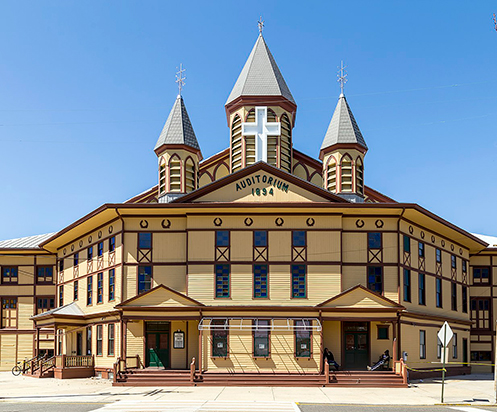 The Great Auditorium, Ocean Grove Camp Meeting Association
The Great Auditorium, Ocean Grove Camp Meeting Association
At this location, the organization began a rehabilitation of its new space. Workers removed a false ceiling, built a staircase to the basement, installed hardwood, lighting, fans, and a security system. None of this would have been accomplished without the financial support of HSOG’s members and its financial supporters.
The organization has developed a permanent exhibition on the History of Ocean Grove. Annually, HSOG plans multiple exhibitions, events, tours, and educational programs on Ocean Grove history. The organization’s museum contains an extensive collection of artifacts from Ocean Grove’s history.
Through its museum, Centennial Cottage and Garden, other historic properties, and interpretive devices located around the town, HSOG provides visitors with a fascinating glimpse of life in a Jersey shore community at the turn of the 19th century.
The organization maintains an archives and research library, which are also Internet-accessible. In 2020, the HSOG doubled its space by purchasing the rear first floor and basement of its space at 50 Pitman Avenue. The organization recently launched a capital campaign to raise funds for:
- Creating new educational programs and events;
- Increasing museum display space so that HSOG can exhibit more of its collection; and
- Building stronger ties between the organization and the Ocean Grove community.
The historic preservation awards committee of the International Society for Landscape, Place, and Material Culture has selected the Historical Society of Ocean Grove as the recipient of the ISLPMC's annual Historic Preservation Award for its outstanding contributions to the recognition and preservation of the heritage and material culture of the Jersey Shore. To receive the ISLPMC Preservation Award tonight is Art James, Vice President of the historical society, and his wife Candace.
ISLPMC Historic Preservation Certificate of Merit
From the award presentation:
For the ISLPMC Citation of Merit tonight we recognize the Doo-Wop Preservation League of Wildwood, New Jersey.
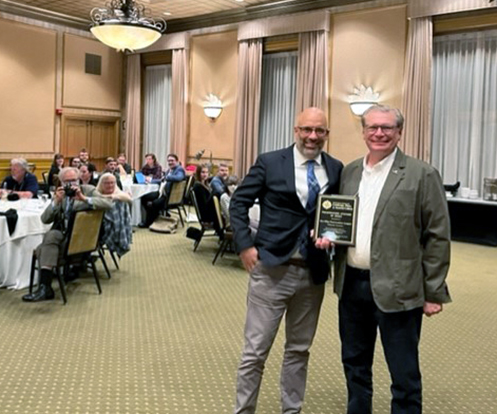
If you were on the bus tour yesterday, you saw the building that houses the Doo-Wop Experience. As Kevin Patrick was telling us on the tour, the building opened during the summer of 1960 as a new restaurant known as the “Surfside.” An example of Space-Age-influenced commercial architecture, the building featured a folded plate roof in the shape of a pinwheel roof with jutting angles and large plate glass panes all around. According to the Preservation League’s website, the business soon became a love-it-or-hate-it-but-can't-miss-it curiosity for residents and summer vacationers cruising down Ocean Avenue along a strip that was quickly evolving into a showcase of colorful, flashy, modernistic architecture that captured the optimistic, forward-looking spirit of the times.
The restaurant business continued attracting curious eyes and serving hungry appetites until 2002, when the Surfside's landlords announced their plans to demolish the building in order to free up space for new hotel expansion. Luckily, the Doo-Wop Preservation League courageously stepped up and helped raise the $20,000 necessary to carefully disassemble the restaurant's steel structure and place it in storage until a suitable site could be found to rebuild it.
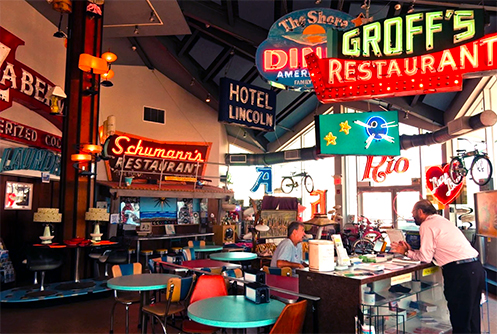 The Doo-Wop Experience, represented well in this photo from the League’s website.
The Doo-Wop Experience, represented well in this photo from the League’s website.
In 2005, the City of Wildwood assisted the Preservation League by providing a building site across from the Wildwoods Convention Center in Fox Park and helping to finance the reconstruction of the Surfside as a museum dedicated to all things "Doo-Wop." Plans also included a bandshell to house outdoor concerts and entertainment.
Groundbreaking took place in late 2006, and construction progressed quickly on the museum as curious onlookers watched the former Surfside's still-futuristic steel skeleton rise again at its new location. The building was enclosed; a collection of Mid-century Modern furniture and other period material culture soon filled the building's newly re-created interior spaces, just in time for a grand opening celebration during the Wildwoods’ “Salute the ’60s” weekend in April 2007.
Brimming with cool Doo-Wop artifacts, fun memories, fascinating history and bright neon lights, the Doo-Wop Experience is a celebration of architecture, design, music, pop culture and everything else that made Wildwood famous in its heyday during the 1950s and 60s. Along with the bandshell, the location has become a cultural centerpiece for the Wildwoods, a place where people can congregate, relax, be entertained, and learn a little something about the Wildwoods’ storied heyday of the 1950s and 1960s.
In addition to the museum collection, the building also houses a retro-style malt shop and gift shop. Outside the building, a "neon garden" displays restored neon signs rescued from old Wildwood landmarks lost to the wrecking ball. At night, the entire complex glows with the exuberance and optimism of the era when the Surfside Restaurant opened in 1960.
Even though the International Society for Landscapes, Place, and Material Culture has a big name, in many ways we’re a small organization and we celebrate the Davids who combat the Goliaths of mindless progress. So tonight, the ISLPMC historic spreservation awards committee would like to recognize the Doo-Wop Preservation League for its outstanding efforts to preserve the heritage and material culture of the Wildwoods. To receive the ISLPMC Citation of Merit tonight is John Donio, President of the preservation league.
